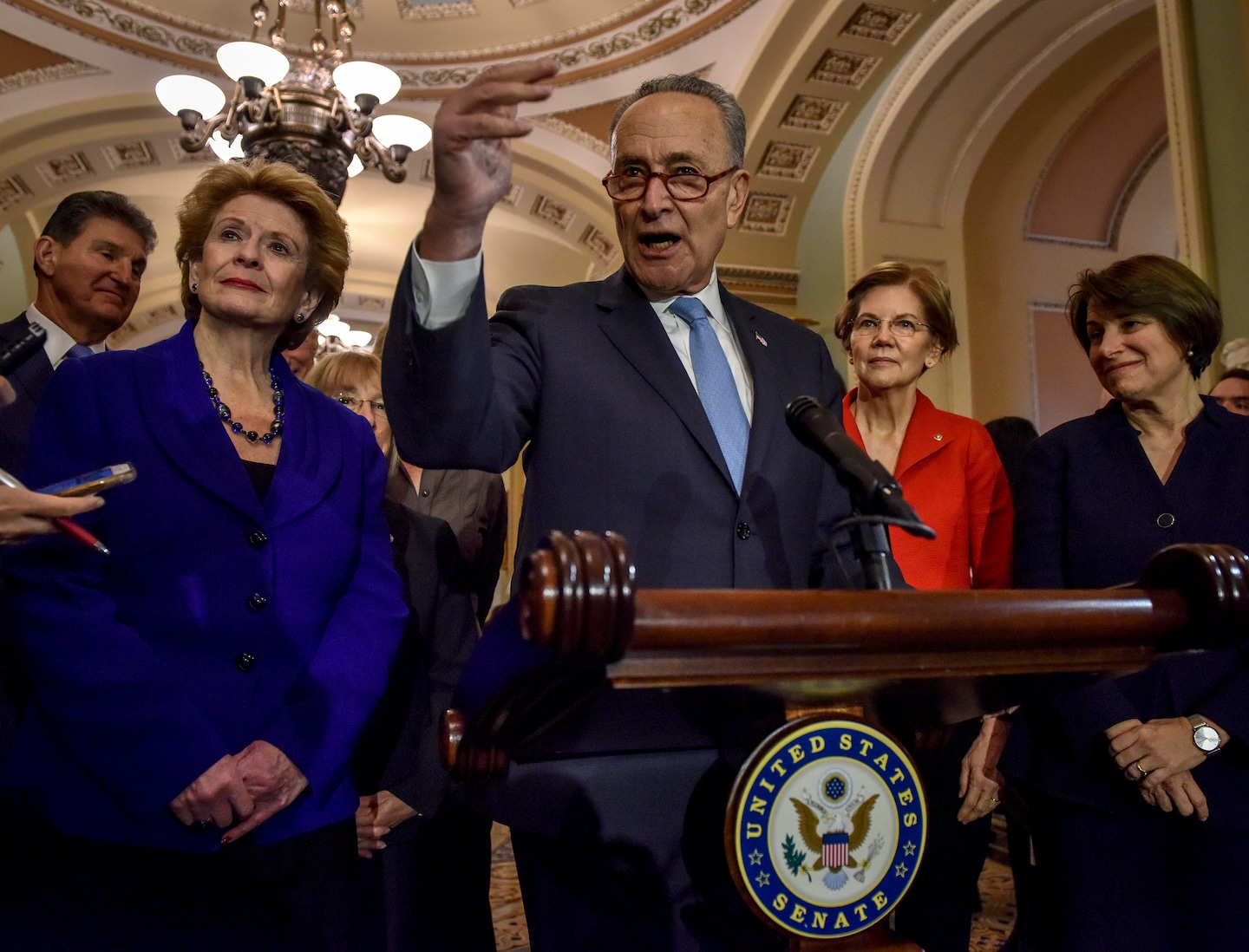[ad_1]
Coming this autumn: fights over abortion, coronavirus and monkeypox
Get ready for a busy fall, y’all.
The White House wants an infusion of cash to tackle the coronavirus pandemic and monkeypox outbreak by Sept. 30. The midterm elections are just nine weeks away — and abortion access has altered the political landscape. And the Biden administration is preparing to stop paying for coronavirus vaccines and treatments.
With August recess coming to a close, here are the congressional showdowns, brewing midterm battles and complex policy changes to watch over the next few months:
In search of: money for covid, monkeypox
Lawmakers return to Capitol Hill with less than a month left to fund the government. And the White House is pressuring Congress to pass billions of dollars for its pandemic and monkeypox responses.
Rather than a longer-term funding agreement, lawmakers are eyeing a temporary stopgap bill to keep the government’s lights on. In a formal request Friday, top administration officials asked that any such bill include roughly $22.4 billion in coronavirus aid and another $4.5 billion for monkeypox. (The Senate comes back today; the House is out until next week.)
But the plea is a tough sell to Republicans, who are reluctant to approve more funding without securing a way to finance the new spending. For roughly six months, Congress has been in a stalemate over new covid aid, without a sign of breaking the impasse in sight.
Administration officials argue that Congress has provided emergency funding without offsets to pay for the new spending under both Democratic and Republican presidents — and say Congress should do so again. Democrats support the administration’s new funding request, according to a senior Democratic aide, who stressed the challenge is finding 10 Senate Republicans.
A Senate GOP aide said “the chances are as close to zero as you can get” without offsets. “It’s a whole new ballgame if there are legitimate offsets,” said the aide who spoke on the condition of anonymity to be candid, stressing that the White House needed to also provide a detailed accounting of what they need.
Also looming: The reauthorization of the Food and Drug Administration’s user fees — which fund a significant portion of the agency’s budget — by the end of the month.
the money includes….
–long sought aid for covid tests, treatments, vaccines
–first-ever request for monkeypox
–defense, intel, econ support for Ukraine, as 2/3 of aid already has been disbursed/committed
–natural disasters, not just Ky but other help for Calif, Louisiana. https://t.co/DFS89QDAsc— Tony Romm (@TonyRomm) September 2, 2022
Democrats are seizing on abortion rights as a potent midterm message, transforming an expected Republican wave into a fierce fight roughly two months out from Election Day.
The GOP is still favored to retake the House, benefiting from inflation woes and President Biden’s low approval ratings, The Post’s Hannah Knowles and Caroline Kitchener report. But abortion has upended contests across the country, from Florida to Michigan to Arizona, leaving some Republicans bracing for more competitive races.
Since the Supreme Court overturned Roe v. Wade, an influx of women have signed up to vote in several states, such as in Pennsylvania, where the increase in registrations has benefited Democrats. A steeper rise occurred in Kansas ahead of an August ballot measure aimed at stripping abortion protections from the state constitution, our colleagues report. Yet, the number of new registrations across the country are still small in comparison with the overall number of registered voters, and some of the data isn’t conclusive.
Groups on both sides are sharpening their battle plans. Canvassers for Susan B. Anthony Pro-Life America, a prominent antiabortion group, plan to visit 4 million voters’ homes in battleground states. And Emily’s List, which supports abortion rights, announced a new tour to campaign for Democratic women in key states.
How abortion has changed the midterms, w/ @CAKitchener…
– Democrats newly motivated, suburban women shifting
– In PA, even antiabortion canvassers don’t mention Mastriano’s heartbeat bill
– GOP House leaders signalled “all hands on deck” on a callhttps://t.co/Pe75cJmAb7— Hannah Knowles (@KnowlesHannah) September 5, 2022
The federal government is preparing to no longer pay for coronavirus treatments and vaccines — a massive shift that will hit uninsured Americans the hardest. Essentially, such a transition would mean Medicare, Medicaid and private insurers would have to help pick up the cost for those with health coverage.
The administration had “always known” that it would hand this role over to the commercial market at some point. But in a blog post last week, Dawn O’Connell — the Department of Health and Human Services’ assistant secretary for preparedness and response — blamed Congress’ lack of new funding for accelerating the transition’s timeline.
- Vaccines: The administration anticipates no longer having enough federal funds to buy and distribute vaccines as early as January.
- Therapeutics: One monoclonal antibody treatment already transitioned to the commercial market last month. The administration anticipates running out of its supply of the preventive treatment Evusheld in early 2023, the oral antiviral Lagevrio in the first or second quarter of next year and Paxlovid in mid-2023.
Larry Levitt, Kaiser Family Foundation:
COVID and other vaccines are free to people with private insurance, courtesy of the ACA.
People who are uninsured would have to pay, without the government purchasing or subsidizing vaccination. https://t.co/VAcIRlVK0W
— Larry Levitt (@larry_levitt) September 2, 2022
Abortion pill providers test legal limits to broaden access
Abortion providers are pushing the boundaries of regulations and laws as demand for medication to end a pregnancy soars, the New York Times reports. Since the Supreme Court overturned Roe, the range of new tactics include:
- Prescribing the pills to patients further along in pregnancy than the 10-week limit set by federal regulators.
- Offering “advance provision” of abortion pills to women who aren’t pregnant but believe they may need them at some point.
- Employing a don’t-ask-don’t-tell approach by providing telemedicine consults and prescriptions without confirming where a patient lives.
The new practices largely fall into a legal gray area amid a rapidly changing national abortion landscape. It’s unclear, for example, whether any antiabortion state laws address providing pills to a woman who’s not pregnant.
Other practices, like helping patients obtain pills even if they live in states where abortion is banned, might violate those laws. Yet, many providers prescribe and distribute pills only in states where abortion is allowed. If out-of-state residents use legally prescribed pills, it remains to be seen if those states can prosecute providers, the New York Times’s Pam Belluck writes.
Antiabortion groups have criticized the efforts, calling them risky for women. Legislation will likely be introduced to combat the new practices, Texas Right to Life President John Seago said, adding that current Texas laws only involve providing abortion to women known to be pregnant. “Legislators are committed to figuring out how to enforce these laws,” he said.
Roxy Szal, digital editor at Ms. magazine and a Texas resident, shared her experience receiving advance provision abortion pills in the mail:
I got my advance provision abortion pills today in the mail to save for a rainy day / day I am pregnant and need not to be… and I was so excited that I filmed my first TikTok! Thank you @Plancpills 💖💖💖 pic.twitter.com/O7VADLuqib
— Roxy Szal (@roxyszal) January 26, 2022
VA plans to offer limited abortion services regardless of state laws
In a historic shift, the Department of Veterans Affairs will soon offer abortion counseling as well as the procedure in certain circumstances at its federal health facilities nationwide, even in states where the practice is banned or severely restricted, our colleagues Kim Bellware and Alex Horton report.
Veterans and eligible family members will be able to access abortions in cases of rape, incest or if their health would be in danger if the pregnancy went to term, according to a draft of the interim final rule that will be implemented immediately upon publication. Secretary of Veterans Affairs Denis McDonough called the move a “patient safety decision” now that access to the procedure isn’t constitutionally protected, but the new policy has sparked criticism from some Republican lawmakers.
Rep. Mike Bost (Ill.), the top Republican on the House Veterans’ Affairs Committee:
Abortion is wrong & Congress prohibited VA from providing abortions decades ago. Yet today, Secretary McDonough announced VA would begin performing abortions in VA facilities. This is a complete administrative overreach that I’m already working to stop.https://t.co/Q4QO5JJOho
— Rep. Mike Bost (@RepBost) September 2, 2022
Coronavirus forecast: Major fall surge unlikely, but new variants are a wild card
Infectious-disease experts are guardedly optimistic that the spread of the virus won’t be as brutal this fall and winter as it was in the first two years of the pandemic, The Post’s Joel Achenbach and Lena H. Sun report.
Coronavirus scenarios from multiple research teams, shared in recent weeks with federal officials, are predicting stable or declining hospitalizations in early fall with the possibility of a late-fall surge. Between August 2022 to May 2023, projections of deaths range from 111,000 to 181,000, depending on several factors, like the success of a reformulated booster shot campaign and the emergence of a new variant.
- While there could be a moderate resurgence in the fall, “nothing appears to be projecting anything like an omicron wave,” said Justin Lessler, a University of North Carolina epidemiologist who helps lead the collection of covid-19 planning scenarios from a group of research organizations.
A new variant is the biggest wild card. However, experts say several factors, including the authorization last week of reformulated boosters and the buildup of immunity against the latest strain of the virus, could help stem covid’s spread during the cold months.
The range of projections presume that newly authorized booster shots will be embraced by the public at a rate similar to that of the annual flu shots. But that assumption may be optimistic since more than half of Americans eligible for boosters haven’t gotten their first dose.
One key caveat: Predictions about the virus rarely age well. Similar to what happened last fall, a new strain more transmissible than the BA.5 omicron subvariant currently circulating could appear and change the pandemic’s trajectory.
And a reminder that the coronavirus is still here …
Over the summer, omicron’s highly contagious subvariants forced Americans to cancel trips, isolate abroad and overhaul their travel itineraries. Read more on the pandemic’s third summer from our colleague Fenit Nirappil here.
- Biden announced his intent Friday to nominate Richard L. Revesz for administrator of the Office of Information and Regulatory Affairs at the Office of Management and Budget. If confirmed, Revesz would be charged with overseeing an office key to implementing Democrats’ sweeping health-and-climate bill.
- The shutdown of Amazon’s telemedicine experiment was surprising. But the company still appears interested in venturing into the health-care market, such as primary care, home care for older Americans, and selling telehealth and mental health services, The Post’s Caroline O’Donovan writes.
- CVS Health has reached a deal to acquire in-home health-care company Signify Health for about $8 billion, the companies announced yesterday.
Thanks for reading! See y’all tomorrow.
[ad_2]
Source link


